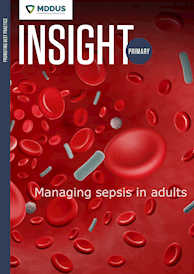AS health professionals face increasing levels of abuse at work, it may be tempting for practices to add an alert or “violence warning marker” of some kind directly into a patient’s clinical record.
While this may seem like a practical way to warn colleagues of a potential risk of aggression, MDDUS urges caution.
Creating an entry in a health record which factually describes the problematic behaviour or risks (or adding an alert) may have long-term consequences. Any information of this kind may form a permanent part of the patient’s health record and follow them from that point onwards.
The functionality involved in adding warnings or alerts will vary between practice systems and it is important to fully understand the functionality of your own system.
Before deciding to add an alert or warning marker to a record, there are a number of key points to consider.
Assessing risk factors
Appropriate risk factors should be considered when reviewing the need for a records marker, including the degree of violence used or threatened, injuries sustained by the victim (both physical and psychological), the need for an urgent response to protect staff and the likelihood the incident will be repeated.
Fairness
Warning markers are likely to contain personal/sensitive patient information and therefore must comply with data protection laws. In particular, the first principle of data protection states that the processing must be "fair and lawful". Practices should have clear policies and procedures in place to ensure that any violence marker flags applied to patient records are done so consistently.
Informing the patient
For the processing to be fair, it is generally advised that the individual affected should be informed in writing of the decision. In some exceptional cases there may be justification for not notifying the individual – particularly if this may provoke a violent reaction and put staff at further risk. Any such decision should be recorded in detail along with the rationale.
No blame
Markers should not be used as a mechanism for attributing blame but only as a means of alerting staff to the possibility of violence. It does not matter whether the violence was deliberate or a result of a medical condition or response to treatment or medication. Markers need not apply only to the patient but may refer to a violent friend, relative or guardian, or even a dangerous family pet.
Any note added should make clear the source of the concern. If the person making the note has not directly observed the conduct or concern noted, they should emphasise that it is an allegation.
Regular review
Another key principle in data protection law is storage limitation, which states that “you must not keep personal data for longer than you need it”. This means that violence markers should be reviewed on a regular basis and removed when there is no longer a threat.
The retention period is likely to depend on various factors such as:
- the original level of threat and the length of time elapsed
- previous and subsequent behaviour of the individual
- whether or not an incident was likely to have been a ‘one-off’, for example due to stress, grief or other factors.
Clinically relevant information
Where unacceptable behaviour manifests itself as part of an existing clinical condition or illness, such as a diagnosed mental illness or learning disability, it may be appropriate to add relevant information in the health record if it is clinically relevant to the patient’s medical history or future care and treatment of their illness/condition.
Attaching comments separately
The practice of recording opinions or other non-clinical information in separate folders which are then attached to patient records in electronic record systems may seem like an attractive alternative. But remember that all such information would be discoverable under a data subject access request, unless it qualified for redaction under information likely to “cause serious harm” if disclosed to the patient. This is quite a high threshold and would not apply to matters which the patient is already aware of.
Incident reporting system
In many cases, it is likely that violent or aggressive patient behaviour can be appropriately dealt with through the practice’s local incident reporting system.
The management of violence, aggression and other unacceptable patient behaviour is a health and safety at work issue, and employers have a defined duty of care to take all reasonable steps to ensure the workplace is a safe one.
Employers must have a recognised system in place where staff can report incidents and near misses in a timeous manner. Such a system should capture all relevant factual information relating to a health and safety incident, which can also include information on any physical and emotional impact on staff. Employers have a legal duty to consider all such reports and formulate appropriate action plans, implementation of safe systems of working and other appropriate risk reduction measures.
Any identified action plans and alerts should be communicated to all relevant staff, and these should provide the basis for managing aggressive, abusive and violent incidents that staff have been exposed to.
Ending a professional relationship with a patient
In certain circumstances a doctor may feel that an irreparable breach of trust has occurred, and they have little choice but to end the professional relationship with a patient.
Doctors must ensure they comply with General Medical Council guidance when deciding whether it is appropriate to go down this route.
ACTIONS
- Proceed with caution when considering adding a violence warning marker/alert to a patient record. Have clear policies in place to ensure fairness and consistency.
- Consider whether the practice’s incident reporting system would be a more appropriate option for dealing with violence or aggression.
- Understand how alerts are applied and transferred in your own practice system to ensure compliance with data protection requirements.
- Ensure there is clarity around how to record health and safety at work incidents and store related correspondence.
- Read MDDUS advice on managing patient conflict for GPs.
- Seek advice from a senior colleague/manager or contact MDDUS on advice@mddus.com for further advice.
This page was correct at the time of publication. Any guidance is intended as general guidance for members only. If you are a member and need specific advice relating to your own circumstances, please contact one of our advisers.
Read more from this issue of Insight Primary

Save this article
Save this article to a list of favourite articles which members can access in their account.
Save to library




